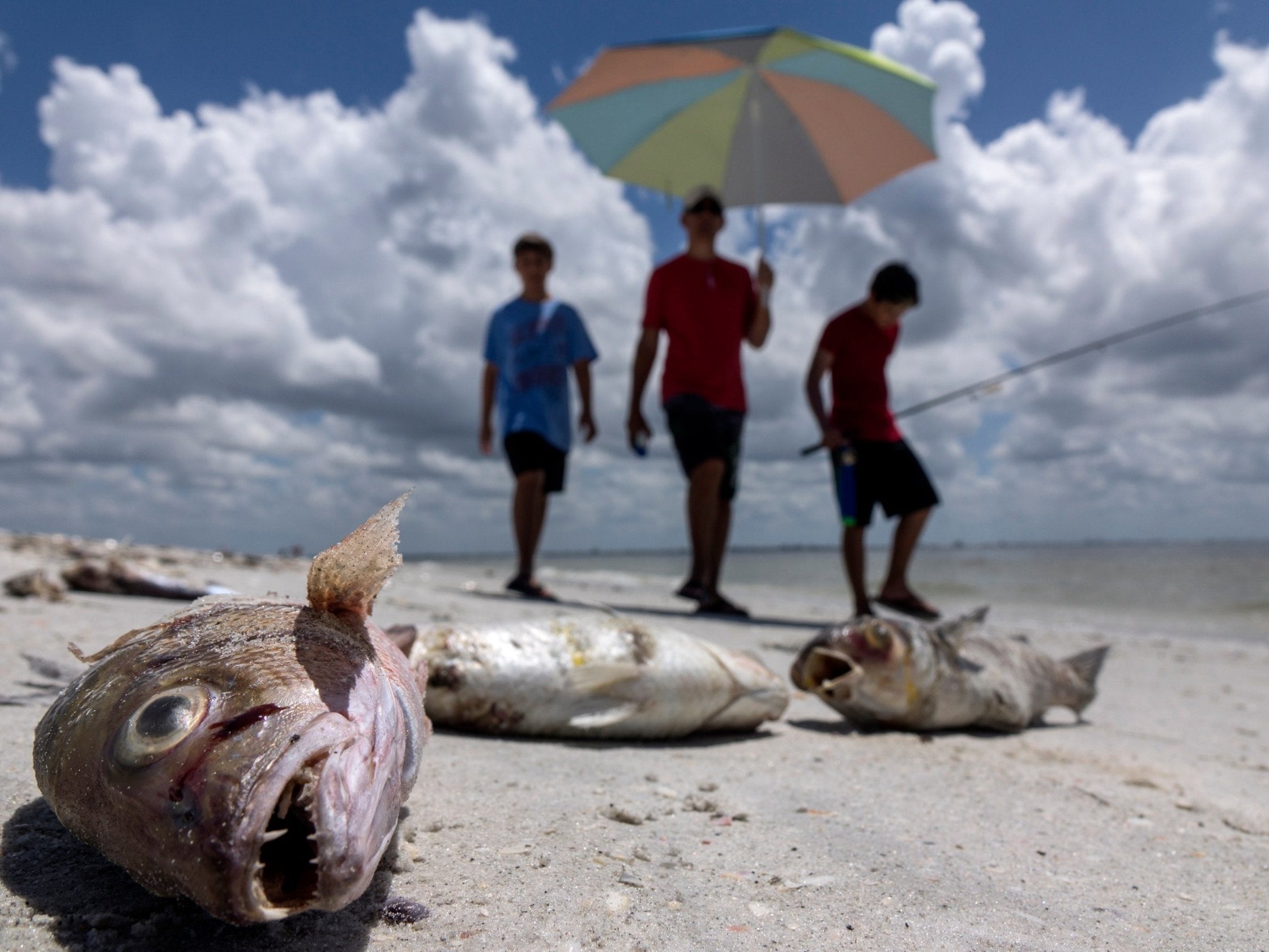Red Tide sparks state of emergency in Florida as turtles, porpoises, and sharks wash ashore dead
The algae blooms have led to a 50 per cent increase in hospital visits for respiratory illnesses in some areas

Your support helps us to tell the story
From reproductive rights to climate change to Big Tech, The Independent is on the ground when the story is developing. Whether it's investigating the financials of Elon Musk's pro-Trump PAC or producing our latest documentary, 'The A Word', which shines a light on the American women fighting for reproductive rights, we know how important it is to parse out the facts from the messaging.
At such a critical moment in US history, we need reporters on the ground. Your donation allows us to keep sending journalists to speak to both sides of the story.
The Independent is trusted by Americans across the entire political spectrum. And unlike many other quality news outlets, we choose not to lock Americans out of our reporting and analysis with paywalls. We believe quality journalism should be available to everyone, paid for by those who can afford it.
Your support makes all the difference.For many communities in seven counties along Florida’s gulf coast, daily reports of “Dead Fish: Heavy” have become commonplace as toxic algae has bloomed, killing sea life, scaring tourists, and making breathing difficult for locals.
The bloom, known as a red tide, have forced Florida Governor Rick Scott to promise $1.5 million in emergency funding and declare a state of emergency in seven counties from Tampa Bay to the fringe of the Everglades.
The algae bloom has led to grotesque scenes along the beaches in the red tide’s path: Popular beaches have been scattered with dead fish, porpoises, eels, turtles, manatees, and even a 26-foot whale shark. Meanwhile, the local populations are struggling with respiratory illnesses, and hospitals have clocked a 50 per cent increase in hospital visits for respiratory conditions during the algae blooms.
The emergency has come just as Mr Scott, a Republican, is gearing up to take on three-term Senator Bill Nelson, a Democrat, in the upcoming midterm elections in November. Each has attempted to use the red-tide algae blooms as ammunition against the other, with both placing blame on the other for failing to fix the problem.
Meanwhile, local communities are suffering.
The red tide has been gradually moving north, according to state tracking data, and is heading towards the mouth of Tampa Bay. Scientists say that the levels of algae they are seeing in the water is enough to kill virtually any fish that may find themselves in the waters.
“There’s no fish left. Red tide killed them all,” Rick Bartleson, a research scientist with Sanibel-Captiva Conservation Foundation, told The Washington Post. “All of our concentrations of red tide are still high and would still kill fish if they were out there”.
Sea turtles have been hit particularly hard by the algae, which exists in the water year round but can bloom as a result of various factors including sunlight, nutrients available, and salinity, according to the Associated Press. More than 300 turtles have been found dead from the red tide.
While algae blooms have occurred historically, human development has altered the land and waterways near the ocean, making it more likely that conditions that would support those blooms.
In Lee County, for instance, the land there was previously 50 per cent wetlands, and that has dropped to around 10 per cent wetlands. Conditions like those have altered the way that rainwater behaves once it drops on the land, and now rushes into rivers, bays, and the gulf often loaded with agricultural nutrients, which feed algae growth.
Algae blooms stand to show up in the fall, and will slow down by the end of winter or in early spring.
Join our commenting forum
Join thought-provoking conversations, follow other Independent readers and see their replies
Comments